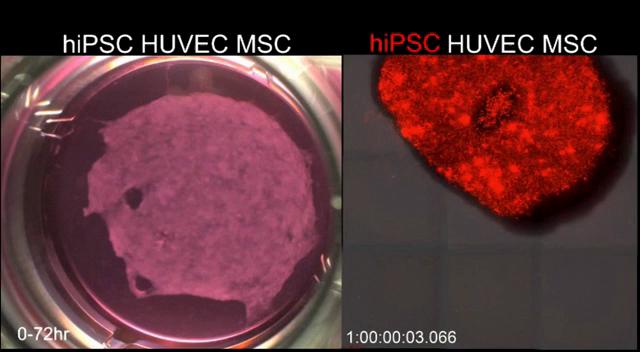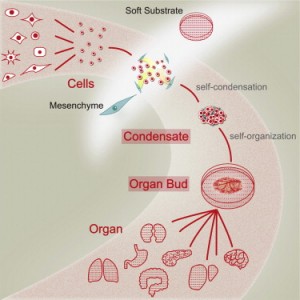Fine-tuned Substrate Stiffness Key to Generating Functional Organ Buds

 Japanese scientists have discovered a new, important factor for a successful in vitro generation of organ buds. According to this new study, the use of a hydrogel of moderate stiffness is very important for cell aggregation. Another critical factor are mesenchymal stem cells (MSCs), which drive cell condensation. The organ buds where transplanted to mice and quickly vascularized and gave rise to functional organs.
Japanese scientists have discovered a new, important factor for a successful in vitro generation of organ buds. According to this new study, the use of a hydrogel of moderate stiffness is very important for cell aggregation. Another critical factor are mesenchymal stem cells (MSCs), which drive cell condensation. The organ buds where transplanted to mice and quickly vascularized and gave rise to functional organs.
Takanori Takebe of Yokohama City University and Hiroshi Yoshikawa of Saitama University previously published a study where they cultured human liver buds. Induced pluripotent stem cell (iPSC)-derived hepatic endoderm cells, MSCs and endothelial progenitor cells self-assembled to form the buds, and these grew into a functional liver when transplanted into a mouse. They used a mix of extracellular matrix proteins, and they knew that some component or property from that substrate triggered self-organization, but they did not know what it was.
In their new study, Takebe and Yoshikawa tagged the three aforementioned cell types with fluorescent marker and tracked them by live cell imaging. They saw that MSCs are responsible for the contraction force that stimulates self-organization and that substrate stiffness influenced condensation. The researchers where able to generate kidney, pancreas, intestine, heart, lung, and brain buds. They transplanted renal and pancreatic buds that vascularized and self-organized into functional tissues.
The finding brings a new way of regulating cell-substrate interactions. Fine-tuning the gel consistency can lead to cell condensation and further organization. Human organ generation could benefit form this technique in the long run, when complex organogenesis is better understood.
Sources: Cell Stem Cell, Nature Methods
